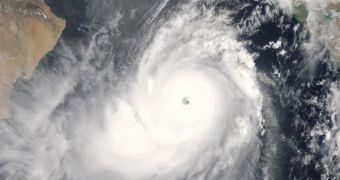An international collaboration of investigators has recently established that excessive pollution released over the Indian Ocean is directly tied to an increase in the intensity of tropical cyclones affecting the Arabian Sea. The link was proposed long ago, but insufficient evidences existed to demonstrate it.
For this study, experts at the University of Virginia worked with colleagues at the Scripps Institution of Oceanography (SIO), the Gwangju Institute of Science and Technology, in South Korea, and the National Climatic Data Center at the US National Oceanic and Atmospheric Administration (NOAA).
Details of the effort were published in a paper entitled “Arabian Sea tropical cyclones intensified by emissions of black carbon and other aerosols,” which appears in the November issue of the top scientific journal Nature.
Large parts of Asia, especially China and India, are affected by pollution to a great extent. These countries also produce a lot of harmful chemicals, which they release in the air in unprecedented quantities. It has long since been observed that this changes climate patterns in the area.
However, the effects do not remain localized, scientists reveal. Rather, they spread throughout the area, apparently all the way to the Arabian Sea, if the new study is any indication. Most significantly, pollution disturbs natural mechanisms that used to keep cyclones in check at that location.
“We’re showing that pollution from human activity as simple as burning wood or driving a vehicle with a diesel engine can actually change these massive atmospheric phenomena in a significant way,” explains UV Department of environmental Sciences assistant professor Amato Evan, who is also the lead author of the new study.
“It underscores the importance of getting a handle on emissions in the region,” the scientist adds. He explains that pollution hinders wind shears above the Arabian Sea, winds that blow in different directions at different altitudes.
While warm waters in the area indeed allow for the formation of cyclones, wind shears traditionally kept the intensity of these natural phenomena in check. But the presence of large volumes of aerosols in the air is changing both wind shears and the way the Sun acts on the ocean.
“The research shows that pollution can threaten humans in unexpected ways. In this case, by reducing wind shear in the Arabian Sea and making conditions more favorable for tropical cyclones to intensify,” NCDC climatologist and paper coauthor James Kossin explains.
The group explains that the change has been progressing at an accelerated pace for over 30 years, and that it will continue to do so due to our reluctance to take any type of measures that would reduce pollution.

 14 DAY TRIAL //
14 DAY TRIAL //